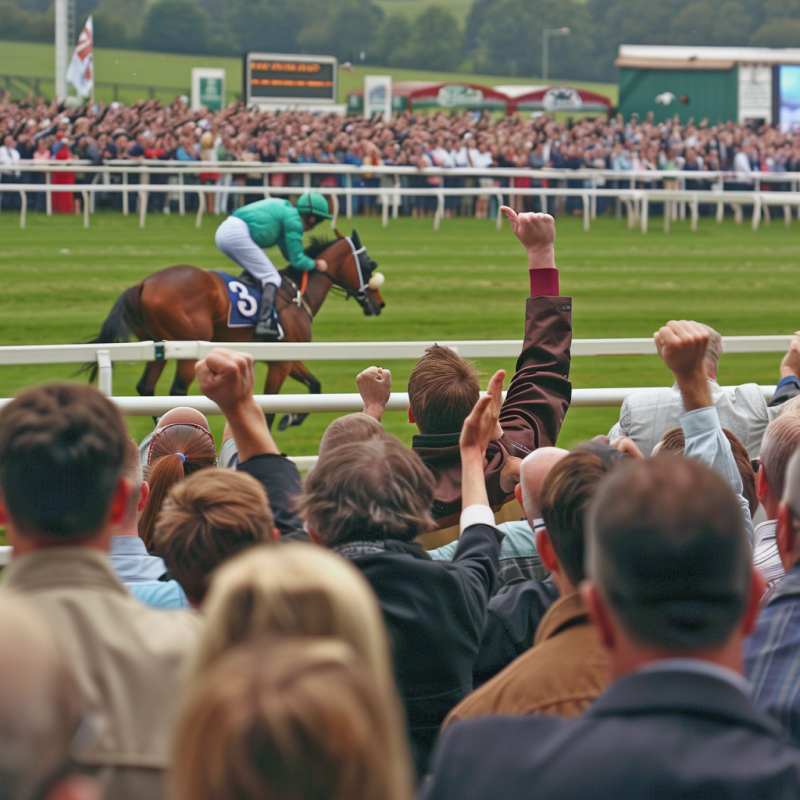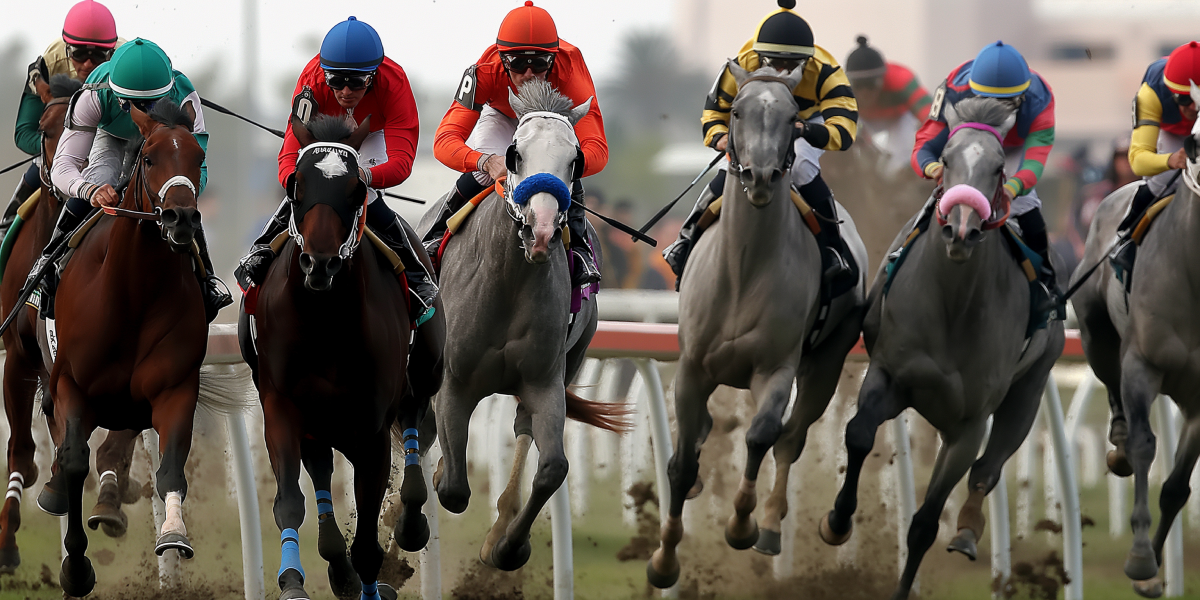Understanding the Makings of a Good Race Horse


1.0
Default
Horses are always described as free and majestic creatures that have roamed the earth longer than we probably have. Historically, they’re one of the most agile, reliable, and helpful animals to have around. It’s no surprise that many people found value in horses when they started pitting them against each other in a race, and thus, today, we have a modern racehorse for all the derbies and tournaments.
But aside from good form and a clean bill of health, there’s more than meets the eye to bet on a good horse in a race. Big horse bettors worldwide study a horse's performance, physique, and overall development to see its racing potential. In this article, we go on a journey to try and fully understand the makings of a good racehorse - and how to choose one to wager on for the next big derby in town.
Sure, your horse seems agile and fit enough for a race, but amateurs don’t often go the extra mile to understand how sound their prize pony is. One of the first few things to check for is the soundness of a racehorse. This is crucial for trainers to grasp to fulfill the horse’s natural ability on the track. What does a sound horse even mean? Aside from trainability, it encompasses solid feet and ankles, agile bones, and strong joints.
This is why there’s always a constant attempt to get a horse at a sale with a good shape, or at the very least, good conformation you believe you can handle and that the horse can keep up on its own via training. What is conformation in horse speak? Well, it’s the physical appearance of the horse based on the muscle and bone arrangement and other body tissue.
To give you a better idea: the ideal body of a thoroughbred includes a balanced form and a short topline (back), which should be almost half the bottom line’s (underline) length. A horse is considered unbalanced when the lengths of the top and bottom line in both the neck and body are close.

Another factor to consider when assessing how fit and prime a horse is for a race is the size of its eyes, which is believed to show signs of alertness and superb focus. When it comes to a horse’s nostrils, you’ll want a prime breed to have broader nostrils for proper breathing when running at its peak speed. Adequate airflow through the nostrils ensures the horse receives an ample oxygen supply, essential for sustaining its energy levels and stamina throughout the race.
Another tell-tale sign of a healthy horse for racing is its coat quality or its fur's shiny and lustrous appearance. Horses with gleaming, shiny coats are the ones to look out for and can help determine a horse’s well-being. You can actually tell if a horse is well or unwell based on its coat, giving trainers and breeders a sign to get them checked out.
Needless to say, a shiny, lustrous coat enhances the horse's appearance. It signals its vitality and well-being, providing trainers and breeders with essential insights into the horse's readiness to compete at the highest level. By prioritizing proper nutrition, grooming, and attentive monitoring of coat quality, horse enthusiasts can help ensure that their equine athletes are primed for success on the racetrack.
If you think that a horse kicking and moving around is enough to keep it going, then you’re very much mistaken; how a horse moves indicates its success on the track and overall purchasability. The rule of thumb when buying a horse is that it should be able to move well regardless of the pace.
Those with lengthy strides have better odds of performing their best since they can cover more ground in the long run. Keep in mind, though, that this isn’t always the case, especially if they move quickly! For instance, even though Marmalady, our quickest horse, has one of the shortest strides in the yard, her legs move quickly enough to be a competitive five-furlong sprinter!
While the movement, conformation, and overall appearance of the horse make all the difference when looking for a good racehorse, there are other factors to consider that are equally vital and could help when finding a trusty horse for the next big race.
A horse’s genetics play a big role in winning or losing a race. Typically considered the prime option for a horse race, thoroughbred horses possess superb traits like speed, stamina, and soundness but, they aren’t always the sure winners in a race.
Breeders search for specific qualities in a horse to produce a strong racehorse, and these attributes are more likely to come from a horse that has already proven itself to be a reliable breeder.
If you’re a seasoned trainer, you would know the essence of a good horse; it holds a sense of calmness, while also being able to carry itself easily. When a horse has its head up and likes to move gradually without losing its jockey’s attention, you know it’s ready to dominate a race.
Moreover, a horse that moves slowly, without displaying signs of restlessness or agitation, signifies a harmonious partnership between horse and rider. This steady, purposeful gait reflects the horse's confidence in its abilities and trust in the jockey's guidance, laying the foundation for a successful collaboration on the track.
Like any mammal, leaving a horse hungry without a balanced diet to supplement its performance is not ideal, especially when becoming a racehorse. A proper appetite and nutrition in their diet are vital when building muscle or maintaining a good weight for racing.
Trainers and caretakers closely monitor a horse's appetite and dietary intake, adjusting feeding schedules and meal compositions to ensure the horse receives the nutrients necessary to thrive on the racetrack. By prioritizing proper nutrition and catering to the horse's appetite, trainers contribute to the horse's physical development and overall readiness to compete.

You can’t force a horse to run when it doesn’t even want to walk. With many horses, the desire to race and compete in meets isn’t a natural occurrence. It’s not easy to convince horses to carry 100-pound humans on their backs and run the mile—if they don’t want to, they simply won’t. Without this inherent desire to compete, even the most meticulously trained racehorse may struggle to achieve its full potential, highlighting the irreplaceable role of passion and enthusiasm in the world of horse racing.
There's more to a winning racehorse than meets the eye. It's not just about looking good and being trained well. Every detail matters - from having strong bones and a shiny coat to chomping down on a hearty meal. But you know what sets apart the champs?
The burning desire to race and the fire in their belly keeps a good racehorse going. Now, if you could spot that in hindsight, you’re good to go! Unfortunately, a good racehorse isn’t a quick study and takes months or even years of proper breeding and training to achieve its full race potential. The only thing you can really do is stick around and hope your best picks show up for you in the long run.
Are you interested in learning more about horse betting? Learn more about the basics from our guide at GambleSpot.

July 26th, 2024
7 Best Horses that Made A Name in Horse Racing
July 24th, 2024
The Role of the Banker in Baccarat - and Why This Could Sway Your Odds
July 19th, 2024
5 Best Slot Games for Art Lovers to Feast Their Eyes on
July 16th, 2024
Fact or Fiction: Pai Gow Edition – What First-time Players Should Watch Out For
July 15th, 2024
Tech and Horseracing: What to Know about Digitizing the Horsebetting Experience
July 9th, 2024
5 Online Casinos with Less than $20 Minimum Deposit You Should Check Out in 2024
July 3rd, 2024
Debunking Common Lottery Myths: What First-time Bettors Should Know
July 2nd, 2024
What to Know About the State of Michigan and Online Poker in 2024
July 1st, 2024
Debunking Common Baccarat Myths: Why You Should Know Better
June 27th, 2024
Understanding the Legal Aspects of Horse Betting in the US: What to Know in 2024Are you sure?
This will delete all chat history, and I will not remember what we were talking about.
✔
Todays Hot Deals